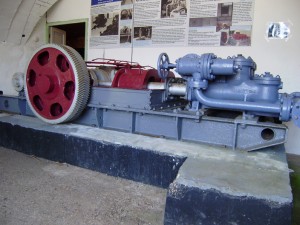P.L.U.T.O. (Pipe Line Under The Ocean)
By John Moss
Whilst on a recent holiday to the Isle of Wight, we paid a visit to the Zoo in Sandown. My wife was somewhat surprised that I was keen to go and see the animals but once inside she quickly spotted the World War 2 connection and then knew the real reason for us going!
The vehicles of the allied invasion force required an enormous amount of fuel. Shipping it across the English Channel on oil tankers was too risky because of the danger of torpedos from German submarines. Operation PLUTO was developed to pump petrol from England to France via specially constructed metal pipelines laid along the seabed.
Once the Americans had taken Cherbourg in 1944 the first pipelines were laid from Shanklin and Sandown on the Isle of Wight to Querqeville. There were some initial operational problems but on the 18th September the fuel began to be pumped across the channel. As the fighting moved closer to Germany the pipeline eventually extended right across France to Germany.
Sixteen of the enormous pumps that supplied the Pluto pipeline were housed in what was then a derelict fort and now the location of the Isle of Wight Zoo. The pumps and their engines were housed in the arches of the fort where the guns had been mounted for the Napoleonic wars and some of the steel fabrication is still present.
Some Statistics:-
Each PLUTO pump had the capacity of 36,000 gallons (163,659 litres) per day.
- The PLUTO operation sent 330,000 gallons per day to the Allied troops after the D-Day invasion.
- The pumps delivered at a pressure of 1,500 lbs/sq inch
- Each pump weighed more than 5 tons, and they were all installed by hand, without mechanical aids


